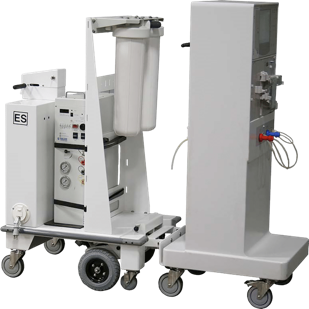Northwest Kidney Centers in Seattle, Washington is the world’s first dialysis organization. It currently provides 250,000 dialysis treatment procedures annually to 1,600 patients at its freestanding centers and at homes. Its Hospital Services Group also provides an additional 1,100 dialysis treatments each month to patients at ten local healthcare institutions. Over the past four years, Hospital Services Group has been using motorized dialysis carts to successfully reduce caregiver injuries and to improve the efficiency of patient care.
Established Procedure
Unlike dedicated dialysis centers, the healthcare institutions served by the Hospital Services Group had different process requirements; some of their dialysis patients were temporarily or permanently immobilized in areas of the hospital (i.e. ICU or telemetry). Since the patient could not go to the dialysis equipment, the dialysis equipment had to go to the patient. Before 2012 this was accomplished manually. Hospital staff members were tasked with moving two pieces of dialysis equipment to the patient. This included a portable dialysis unit and a reverse osmosis (RO) unit providing the necessary water supply for the dialysis function, a total weight of 350 pounds. Each cart was pushed or pulled separately to the location.
Download Case Study